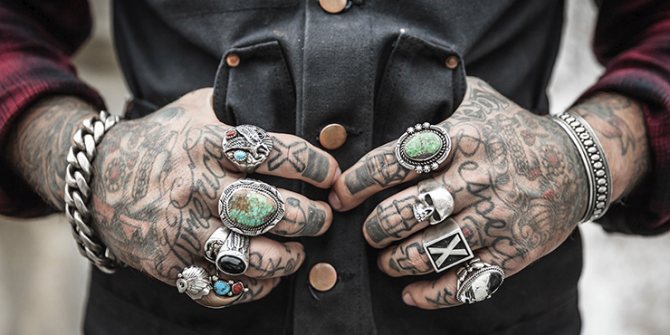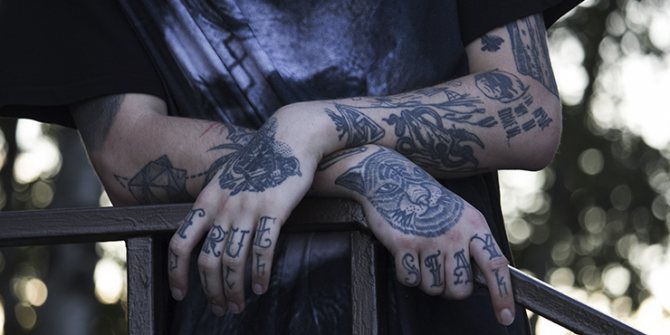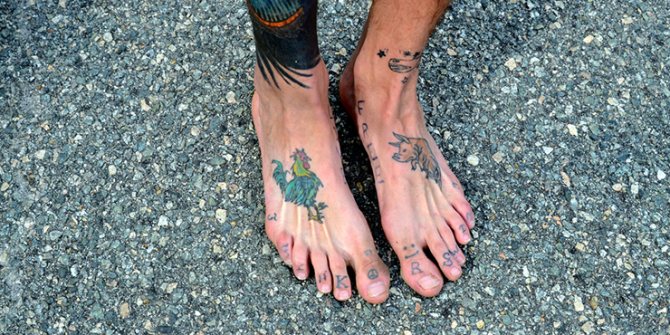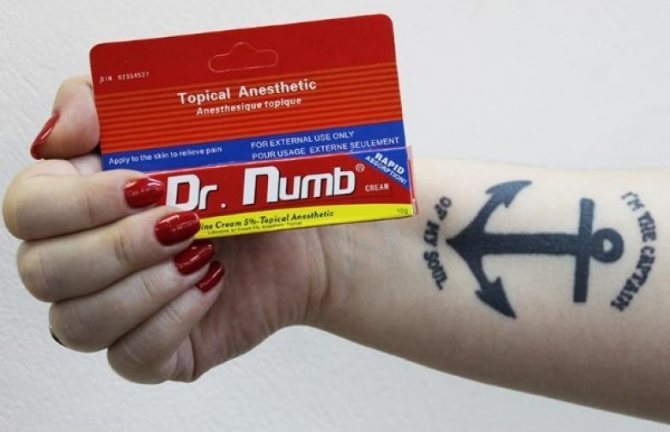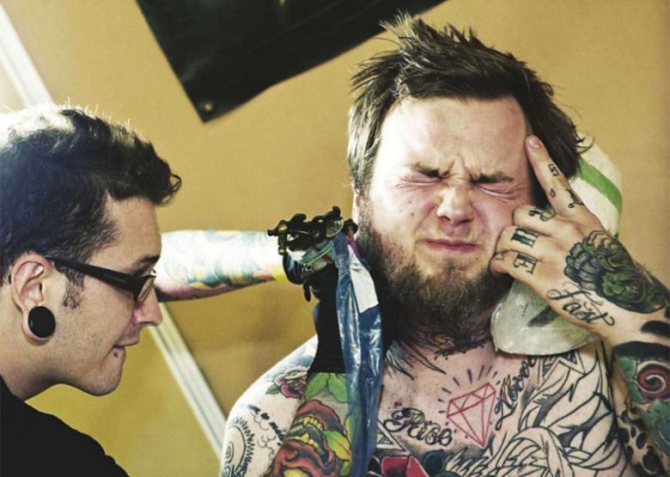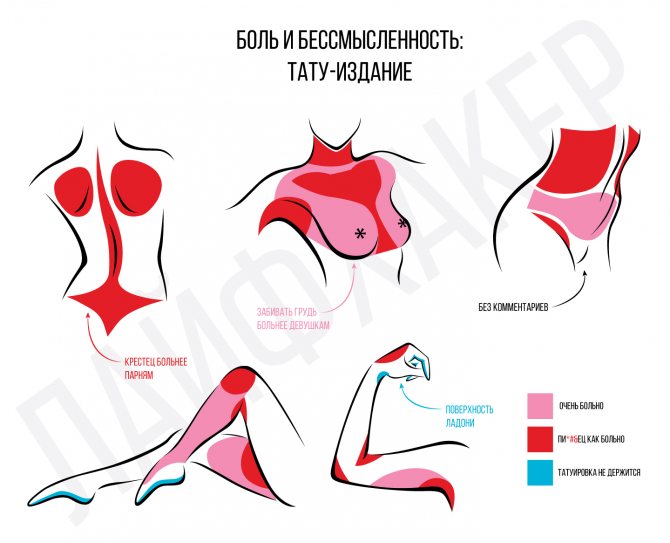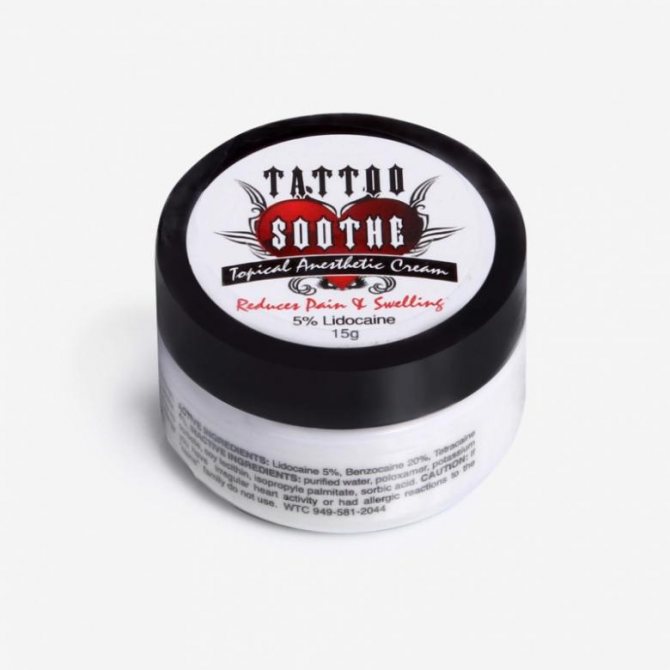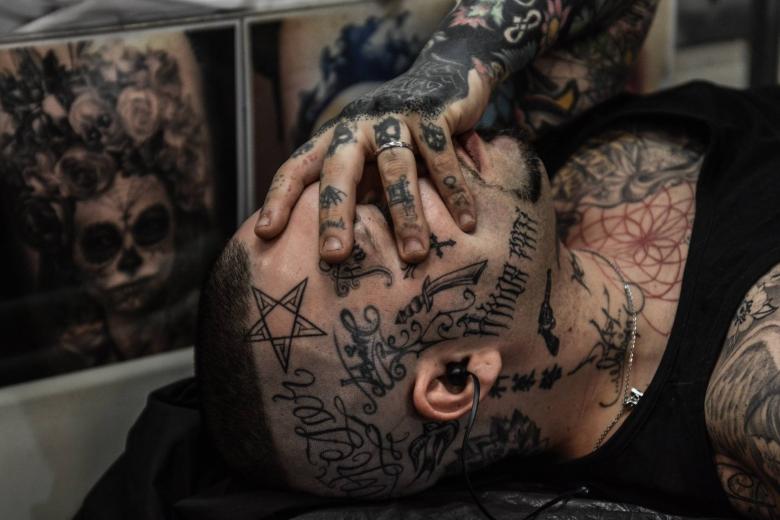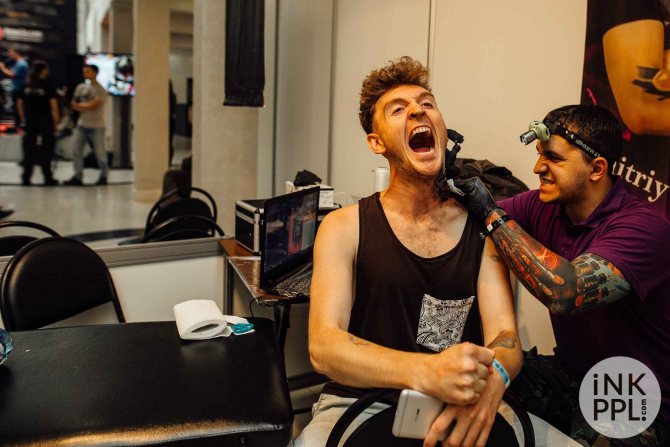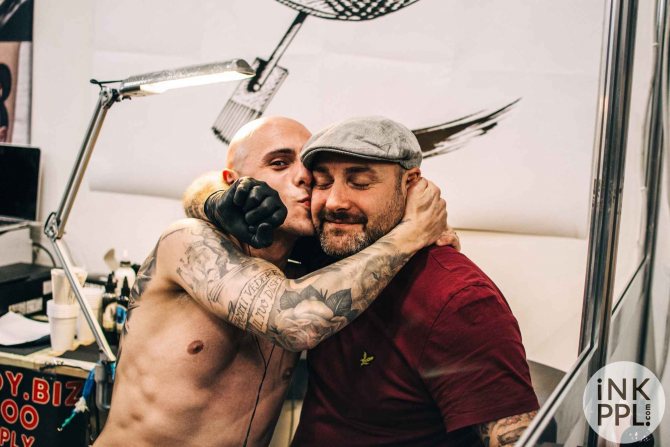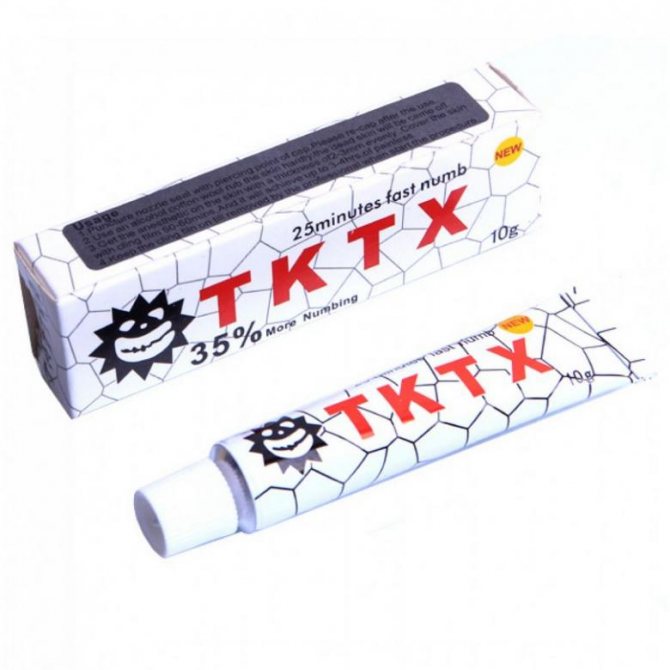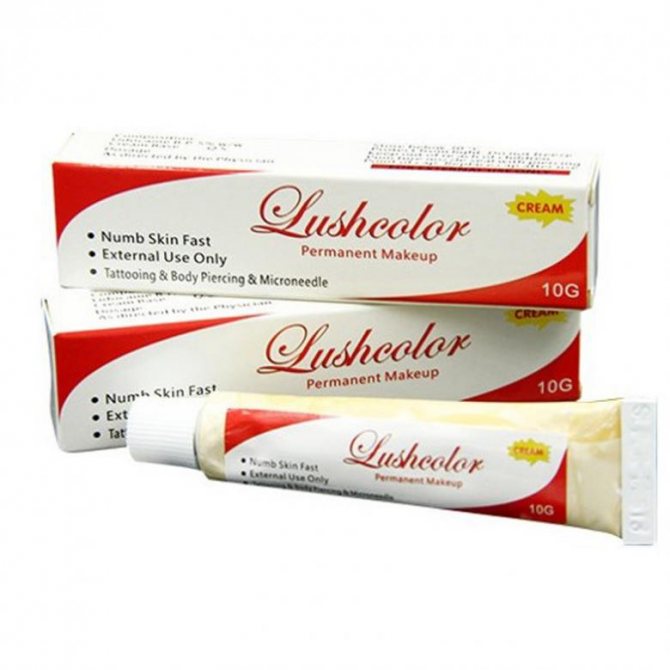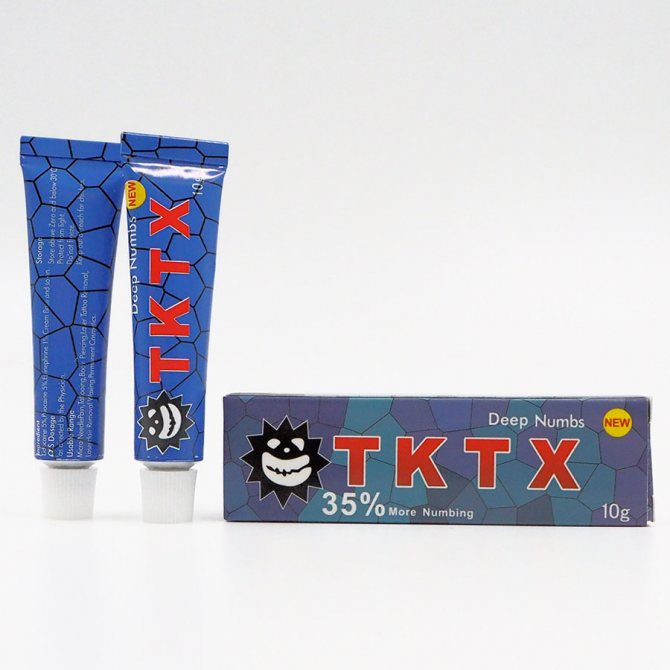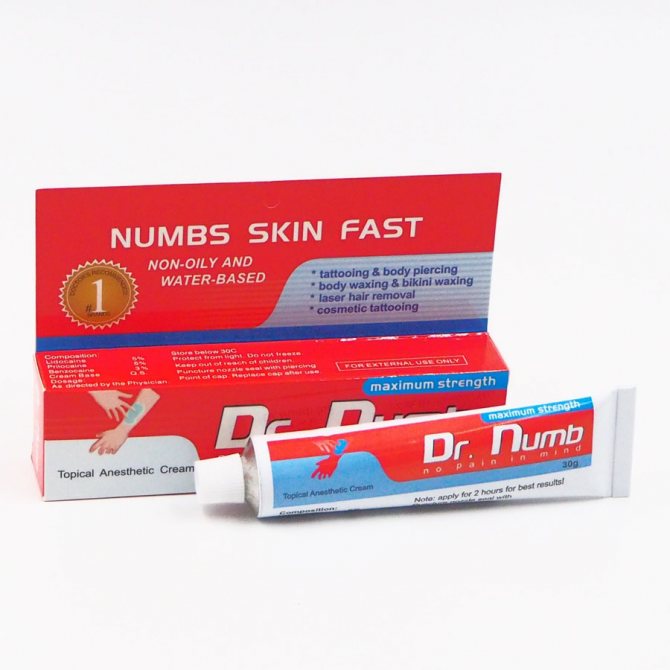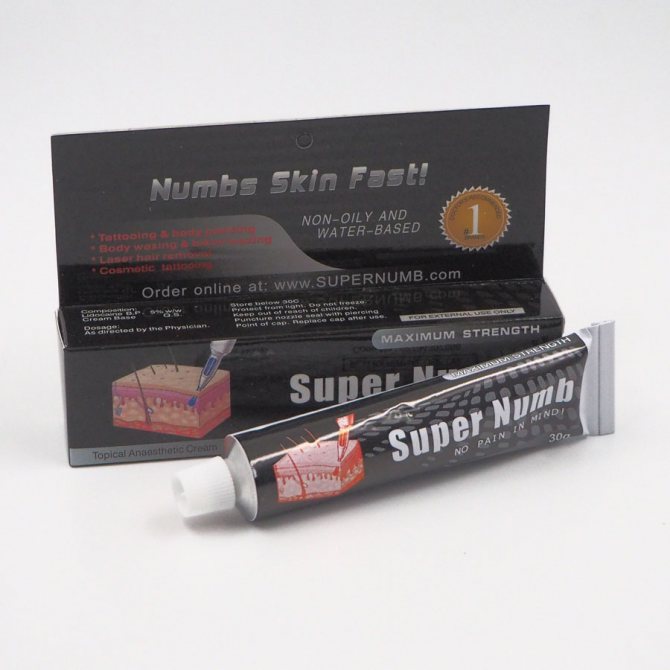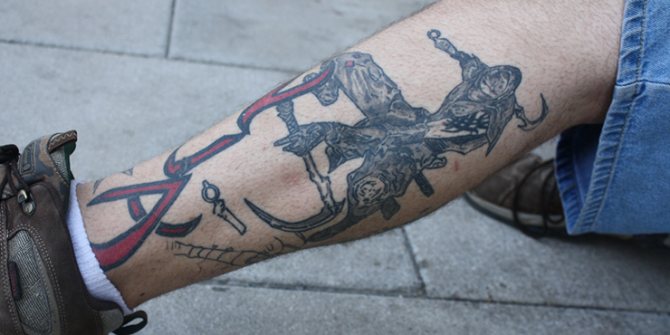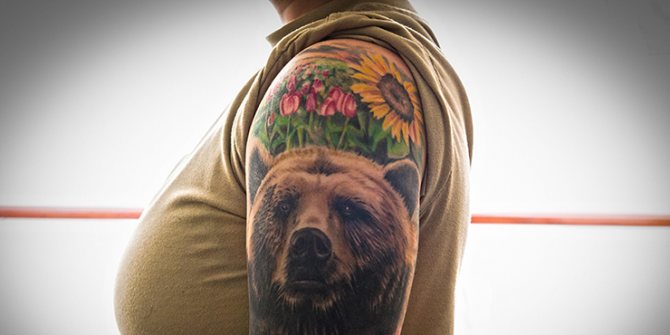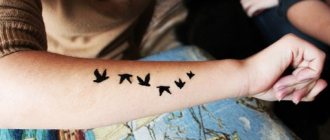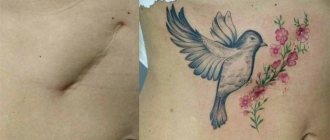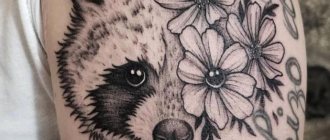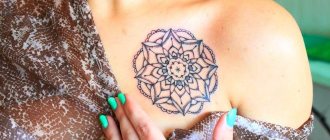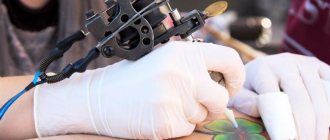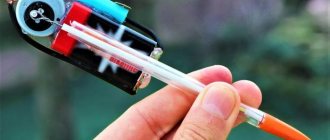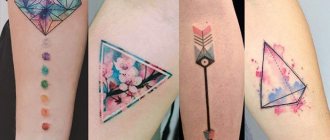
Pain and fear of the needle are the defining phobias of all those wishing to get a tattoo. Often they overshadow even the fear that the result of the master's work will not fully coincide with the sketch.
Most clients of tattoo salons ask the master to use a local anesthetic before the tattoo session in order to somehow reduce the discomfort during the procedure. Often masters are forced to go along with clients, though real professionals are against using anesthetics for tattooing a priori. We will tell you why in this article.
Why is it necessary to use analgesics?
The most sensitive places for tattoos:
- Head.
- Neck.
- Thorax
- Periorbital area.
- Groin area.
- Inner surface of the thighs.
- Knees (front and back).
- Ankles.

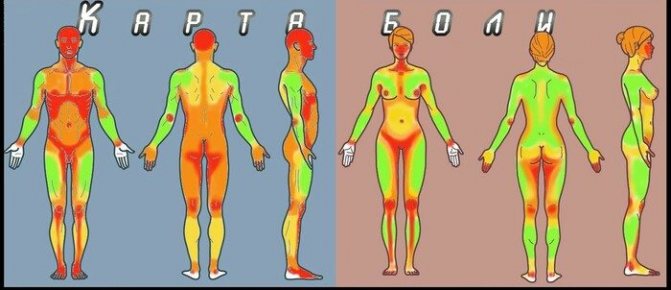
The most sensitive spots for tattoos
The more sensitive the area, the more painful it is to do a tattoo. The sensitivity of other parts of the human body is presented in the table.
| Zone | Sensitivity |
| Outer side of hand | Weak |
| Hand | Strong |
| Stomach | Middle |
| Shin | Average |
| Scapulae | Mid |
| Rear of knees | Strong |
| Ankles | Strong |
The most pain-free areas are the "soft" areas that deeply hide the bone from external exposure, such as the glutes or shoulder (biceps). Contact with bone tissue creates unnecessary pain, while muscle and fat soften the impact. The back is also considered a safe area because of the thick skin and small concentration of nerve endings.
Sensitivity in women and men is different, so you can not rely on other people's experience and hope for no pain.
Anesthesia before tattooing is important when working with areas such as the face or ribs. Modern means - anesthetics - completely or partially get rid of unpleasant feelings and allow you to feel comfortable during the work of the master.
Summary
In most cases, the pain during tattooing is of a near-phantom character. The client comes to the tattoo studio in a state of intense anxiety, which visibly aggravates even a small discomfort.
Tune in to the procedure. Get a good night's sleep, eat a hearty meal and take a relaxing bath before going out. Think not about the fact that you will be a little uncomfortable, but that very soon you will proudly show your loved ones the cherished image on your body.


In case of force majeure or in case of obviously painful tattooing (close to the bone, on the neck, nipple aureoles, groin area, knee and elbow bends) use only the tested anesthetics.
Talk to the master in advance about possible scenarios. There are a lot of other ways to reduce the pain while getting a tattoo. Maybe in some especially acute moment it will be enough to take a break and have something to eat, turn on some music, talk to a friend who is ready to support you during the procedure. And everything will seem not so terrible, you have no problem to sit through the session to the end, without resorting to anesthesia.
Contraindications
In order not to refuse a tattoo because of painful sensations, local anesthesia is used. The main reason for its popularity is a wide range of anesthetics and minimal contraindications. The main drawback is individual intolerance to the body.
Certain components contained in the products may cause allergic or inflammatory reactions.
The basis of most anesthetics is lidocaine, which completely eliminates pain during puncture by inhibiting nerve endings, but retains some tactile sensitivity. The side elements in the creams are agents that help reduce trauma, antibacterial and emollients.
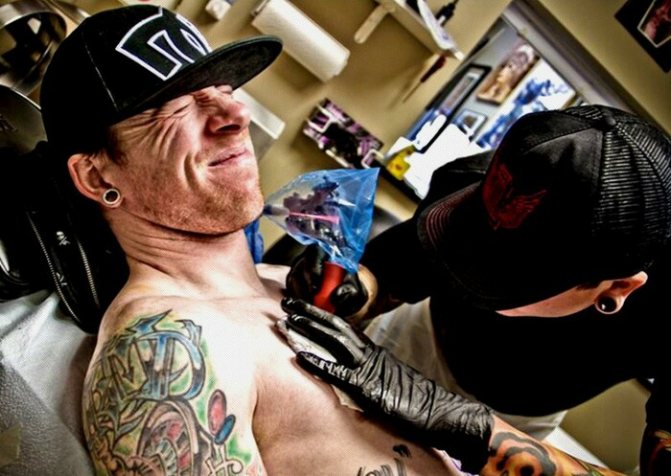

Contraindications of anesthesia before tattooing
Anesthesia before tattooing, in addition to individual intolerance, is prohibited for the following problems:
- Cardiovascular disease.
- Pregnancy and lactation period.
- Diabetes mellitus.
- Fluid congestion.
- Diseases of the skin.
- Open inflammatory processes.
In all other cases, if used correctly, anesthesia will not cause any harm, but on the contrary, will contribute to a painless process of creating a tattoo.
Before the session
Before your session, you should eat and drink a couple of glasses of water. Choose loose, comfortable and most importantly clean clothes. Be sure to take a bath/shower. When the body has no natural irritation in the face of hunger or desire to scratch or correct something, the discomfort of the tattooing process will decrease.
As with any pain, breathing is important. At times it is strong, but times, remember that. Exhale when you feel the discomfort of the pricking particularly keenly. Breathing out reduces tension and pain. Don't hold your breath; without air in your body, the discomfort will get worse.
Move as little as possible, don't fidget. The less body movements from you, the more accurately the master applies the tattoo, which means the procedure time will be shortened. Imagine an artist painting on a moving canvas, which unluckily and accidentally twitches and tends to turn over. If you do need to move, warn the master in advance so that he takes the machine away from your skin. Otherwise, you may disrupt the fine work of the master.
Types of Anesthetics
Anesthetics are drugs that have analgesic ability. In the tattoo sphere, local anesthetics are used, they are the least harmful and block pain only in a limited area. Means, depending on the composition, act from 1 h to 5-6 h. When applying tattoos, creams, gels or ointments based on lidocaine are usually used.
It is suitable for tattooing because of a comfortable range of action - 2-4 h. The principle of action of lidocaine is based on its pharmacological property of blocking the passage of nerve impulses, interacting with the human nervous system.
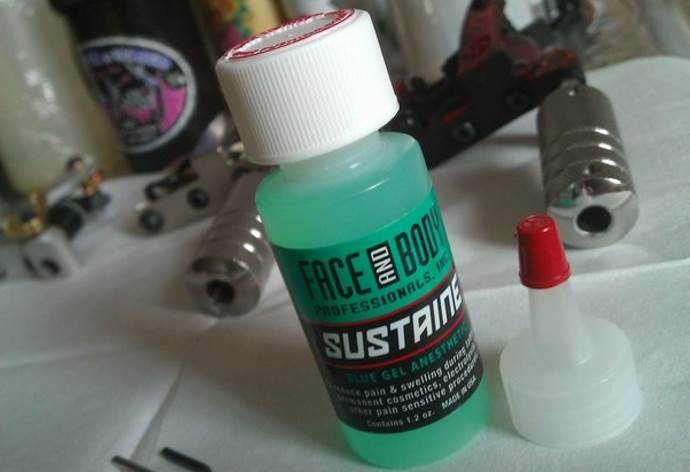

Varieties of analgesics
There are no nerve impulses, which means that the pain from the damage to the upper skin is not felt. Due to the secondary components and their effect on the skin area, anesthetics can be warming and cooling. The former promote blood flow and increase heat exchange, which is undesirable during the tattooing process.
Warming anesthetics are best used for the purpose of healing rather than anesthesia.
The area will be more oxygenated and given substances to regenerate. Cooling ointments are more suitable for tattoo artists, as they reduce pain and in parallel have an anti-inflammatory effect, contributing to less trauma.
Topical preparations
Anesthetics with a cooling effect are used for tattooing. The main active ingredient in them is Lidocaine. It reduces, and sometimes completely stops the pain for 2-4 hours. The time of action of the drug increases to 5-6 hours if lidocaine is combined with prelocaine, tetracaine or benzocaine.
In addition, the applicative anesthetics contain antibacterial and emollient components. They prevent the formation of hematomas (epinephrine), reduce the traumatic effect of the needle on the skin, promote its rapid recovery after the procedure.
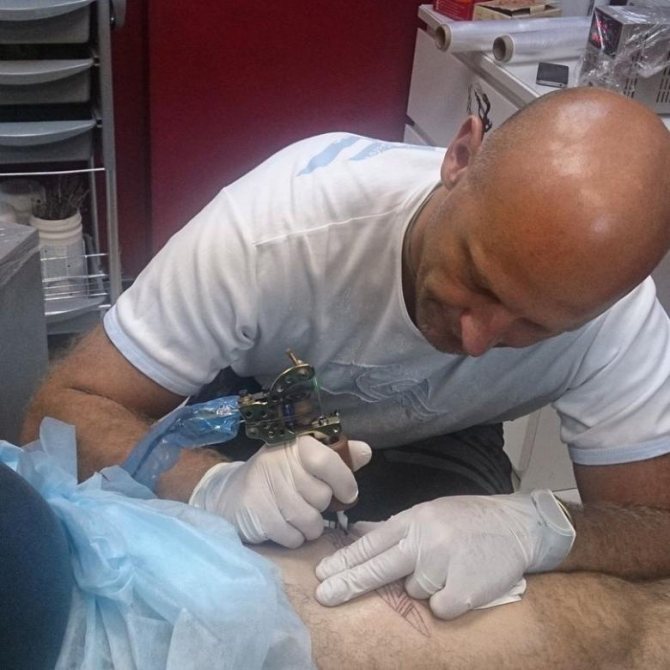

A simplified scheme of how anesthetic drugs work is as follows:
- The anesthetic is applied to the localized area of the skin;
- The active ingredients of the drug are absorbed and penetrate to a depth of up to 8 mm.
- The permeability of cell membranes decreases, and the rate of transmission of nerve impulses decreases.
- The CNS does not receive signals from the skin receptors, as a result the pain sensations temporarily disappear.
In the process of filling the pattern, the needle traumatizes the skin, so special attention is paid to cleanliness. It is necessary to remove all hairs from the skin beforehand. After that the master degreases and treats it with antiseptic. The cream is applied strictly according to the instructions, 20-30 minutes before the start of work and wrapped in foil.However, tattoo artists do not always use anesthetic preparations. One of the reasons is the individual intolerance of the components of the drug.


Anesthetics overview - ointments, creams, gels
The choice of anesthetics is based on a person's pain threshold. Ointments, creams or gels are varieties of release forms that differ in composition and concentration of the active ingredient.
- A gel is a preparation with a soft, viscous consistency, created on a water basis.
- Creams are made on the basis of oils and water and are the most rapidly absorbed.
- Ointment is a product based on fatty acids, it is more slowly absorbed and leaves a greasy residue for some time after application.
The remedies are arranged in decreasing order of duration of action:
- TKHT ointment. One of the most popular ointments today. It is used not only in the field of tattooing, but also in cosmetology (when tattooing eyebrows, lips or eyelids). It has a 4-hour action thanks to lidocaine and prilocaine, which are effective pain relievers. Epinephrine is added to reduce inflammation and swelling and to reduce bleeding. Immediately before application, the skin should be treated with alcohol. For effective use, it is necessary to cover the area with a film for 30 minutes after lubricating it. It is believed that the ointment does not affect the quality and clarity of the pattern and does not deform the skin. The ointment is very popular among tattoo artists.

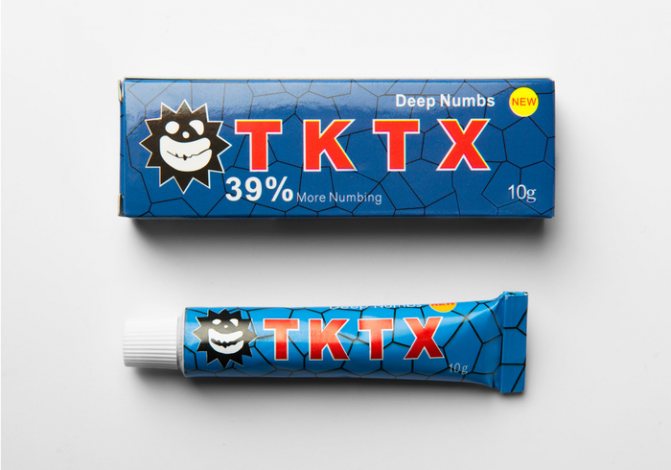
Review of anesthetics - ointments, creams, gels - Deep Numb Ointment. In addition to lidocaine, the composition has other substances - prilocin and benzocaine. The principle of action is similar - acts for 4 hours, applied in 30 minutes. before the session after a thorough alcohol treatment. Do not apply to wounds or abrasions, or to people who are allergic.
- Numb Cream. Blocks 100% of the painful sensations when applying a tattoo. The depth of action varies from 5 to 8 mm and has a low consumption because it is covered with a thin layer of 2 mm. It is applied in 15-30 min. and works for 3 hrs. If the session will be long, it is better to choose a product with a longer action.
- Prepcaine" cream. The main components are lidocaine and tetracaine. The disadvantage of this tool is the hourly interval between the use and the application of the tattoo. The action of the product ends after 2 hours, but because of the delayed action, the process is stretched to at least 3 hours.
- "Sustain" gel. Duration of pain relief - 2 h. The gel significantly reduces swelling and reduces bleeding during tattooing. If used in excess, it impairs pigment absorption by the skin, so the product should be applied once in a thin layer. Particularly dangerous when in contact with mucous membranes.
- Sxyan Cream. Widely used in cosmetology for tattooing and piercing, as well as in tattoo parlors. Allows to get rid of the pain of skin injuries for 2 hours. Time to action - 30 min, the main ingredient - lidocaine.
- Lushcolor" cream. Composition is the same as the previous one, soaking time under the film is 25 min. At the end of this time, the place should be wiped dry and work should begin. The main component is lidocaine.
List of the most popular applicators
The variety of modern anesthetics allows you to accurately select them according to the needs and individual characteristics of the client. Below is a list of commonly used agents:
- TKTX ointment - used for applying and removing tattoos, cosmetic tattooing. It contains a combination of amides: lidocaine + prilocaine (5%) and epinephrine (0.01%). The action time is up to 4 hours, the ointment with a label on the package of 35% and above - up to 6 hours.
- Prepcaine cream (Prepcaine) has analgesic (lidocaine -2% + tetracaine -1.5%), cooling and anti-edema effects. Suitable for all skin types. Anesthetic effect - 2 hours. During the procedure can be applied repeatedly.
- Cream "Dr.Numb" - penetrates into the epidermis to a depth of 5-8 mm, which allows its use in areas of high sensitivity. The maximum duration of action for 2-3 hours.
- Gel "Sustaine" (Sustaine Blue Gel) - contains: lidocaine - 4%, tetracaine - 2%, epinephrine - 0.02% and active ingredients that prevent the formation of hematomas and swellings. Effectively relieves pain for up to 2 hours. Applied once, repeated exposure worsens artificial pigmentation. Its contact with mucous membranes must be completely excluded.
- Super Trio Cream (Super Trio) is a fast and powerful preparation based on benzocaine (12%), lidocaine (4%) and tetracaine (2%). It is used for classic and artistic tattoos, permanent makeup (excluding the eye area) and laser procedures. Suitable for all skin types. The duration of action is about 25-30 minutes.
- Anesthetic cream "Ice Blue" (Eyz-A-Blue) - specially created for work in the eye area. It is odorless, Ph-neutral, does not blur when applied. Active for 20 minutes.


The above products are not medicines and are not distributed through pharmacy chains. You can buy them in specialized salons, at thematic exhibitions or on the Internet.
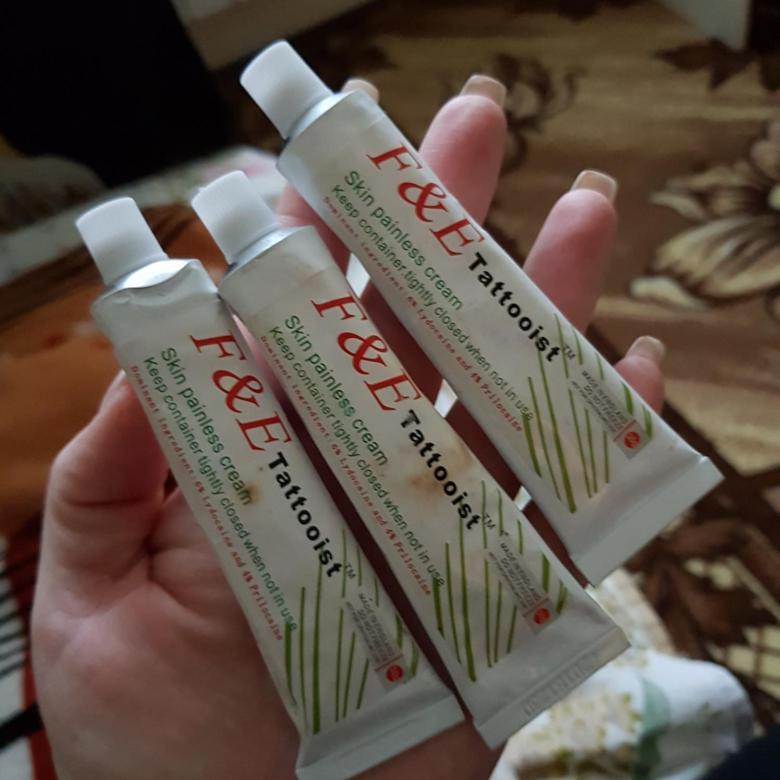

General recommendations for choosing remedies
Specialists in the field of tattooing give the following advice to those who have decided on such a procedure.
Consultation of the master
Anesthesia must be chosen correctly, for this purpose it is best to consult before the procedure with the tattoo artist who will conduct the session. He may have personal preferences for working with preparations.
Body peculiarities
It is important to consider the individual intolerance of some components. Before buying, it is necessary to read the composition to check for the content of allergenic substances prohibited for each case. If there is, it is necessary to find an analogue without this component.
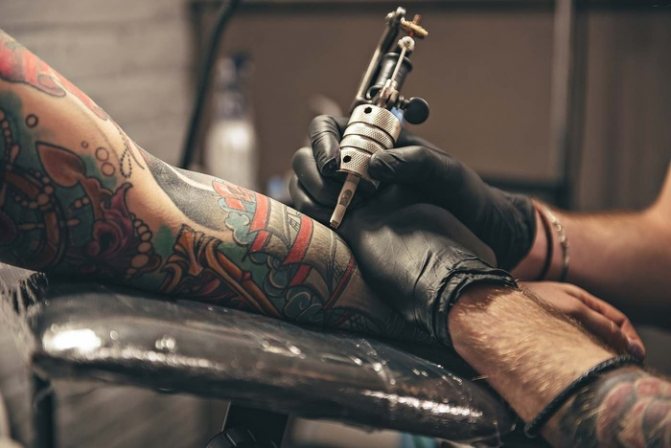

Features of the body
If there is a suspicion of allergy, you can try the remedy a few days before the session on a small area of the skin and identify the reaction of the body. Anesthesia before tattooing rarely leads to allergic reactions. The main symptoms are hives, rashes or itching at the site of application of the product.
Duration of action of the drug
If the work takes 3-4 hours, then the remedy should be chosen with the appropriate duration of exposure, otherwise the remainder of the work, after the cessation of its effect on the body, will deliver pain.
Reviews
In the public domain you can find a lot of reviews about antiseptic agents, information about the frequency of allergic reactions or recommendations of other tattoo artists who have tried this drug.
Where it is the least painful to do a tattoo
Getting a tattoo on the softest place (we're talking about your buttocks, of course) is the most comfortable option. But most people aren't ready to adorn this part of the body with a drawing, so let's move on to the places where a tattoo looks more advantageous.
Someone who has a reduced tolerance for pain will have a less painful experience with a tattoo on the following parts of the body:
- outer thigh surface;
- forearm;
- calf;
- back.
Outer thigh surface
There is a thicker fat layer and rougher skin, which minimizes pain.
Forearm
Perhaps one of the most popular places for tattoos. Stamping a picture on the shoulder is not very painful: you quickly get used to the unpleasant sensations, and the wound healing process in the vast majority of cases is quick and without complications.
There is a misconception that small drawings are much less painful than large ones. I do not agree, because in the first case, the master has to work on one small area, making the skin on it more irritated.
Alexander Maryshev
Tattoo master, does tattoos for about 20 years
Caviar
This part of the body consists entirely of soft tissue, which acts as a kind of buffer when pricking the needle.
Back
The skin on the back is thick and there are not as many nerve endings as in other areas. Moreover, lying on the stomach, a person relaxes, which also reduces the pain during the tattooing session.
If a tattoo involves a small amount of work, then in fact most of the body is quite tolerant of injections: arms, legs, abdomen, back. Here you have to understand that everyone has a different pain threshold: what hurts the hell out of one person is just a mild prick to another. For me personally, the most painless places are my buttocks, calves, and forearms. When I get a tattoo there, it feels like my cat is just slowly and tediously scratching the same spot.
Irina Saratova
Has been doing tattoo for 15 years
Proper preparation for tattooing
On the eve of a visit to the salon you must carefully consider the idea of a tattoo, to discuss details with the master and be confident in your decision. The salon should choose a proven, clean and with a good reputation, the low price is not the primary factor.
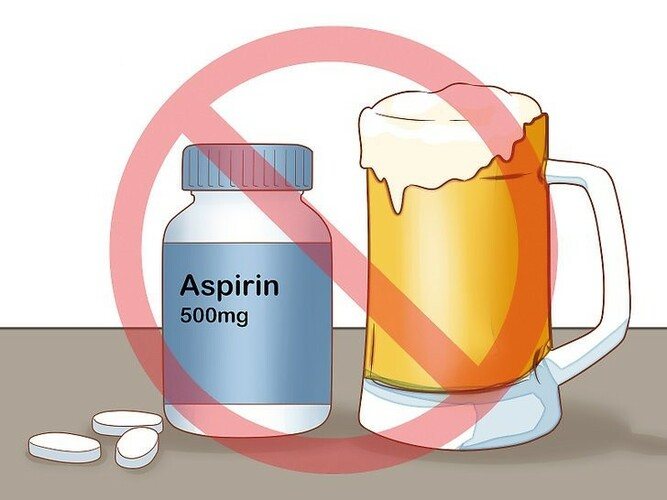

Proper preparation for tattooing
- It is best to choose not the salon itself, but the master, whose drawings you like.
- The time of the session should be convenient for visiting, because if the tattoo will be located in an uncomfortable place, prone to friction, you will need to go home after the procedure.
- The day before the appointed date it is necessary to refrain from drinking alcohol, which can increase the traumatic effect of the needle and the amount of blood that came out during the session.
- You should avoid coffee and energy drinks - caffeine helps increase sensitivity. It is better to replace such drinks with water. It moisturizes the skin, and the colors will be better absorbed by the skin.
- People with dry skin type should start using moisturizing cream in a week. Scarring or scars appear more often on dry skin, so this step should not be neglected.
- It is necessary to prepare the skin according to the following algorithm (regardless of skin type):
- Use moisturizing creams more often, replacing the usual usual skin care products.
- Get rid of hair (if necessary).
- Do not apply any products or traumatize your skin 12 hours before the session.
Is it possible to do without anesthesia at all?
You will not be able to fully stop the pain, but it is possible to significantly reduce its perception. To do so, it is enough to adhere to a few simple rules.
- The body is able to cope with pain on its own. At the signal of the brain there is a sharp release of endorphins, so that in a few minutes you get used to the pain and it no longer seems unbearable.
- Once again specify the time of the meeting, discuss with the master all your concerns, make sure that the sketch of the drawing you still like 100%.
- Start using moisturizing lotions beforehand. Dry and thinning skin is more sensitive, more easily traumatized and prone to scarring.
- For your first tattoo, choose the least sensitive place.
- A walk to the salon, your favorite tracks in the player or a friend's company (if the master will not mind his presence) will help to relax and relieve unnecessary stress.
- If it is really necessary, ask to take a break during the session to "take a breath".


A healthy, rested body is easier to overcome stress and discomfort, so the day before reduce physical exertion and get a good night's sleep. A couple of hours before the session it is desirable to have a solid meal, but not spicy and salty.
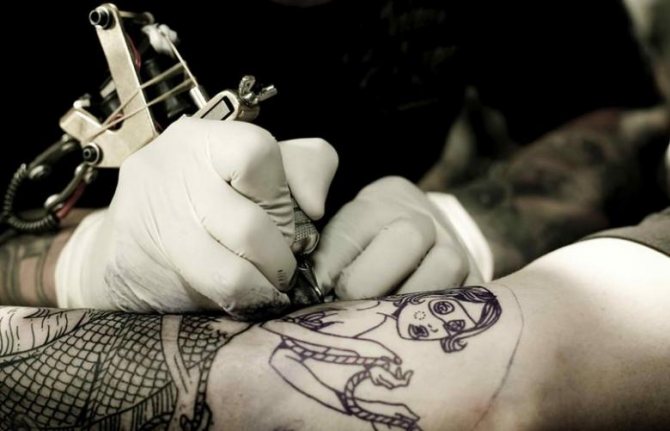

How does the process of tattooing occur?
After all the necessary stages of preparation for the session, the master starts tattooing.
Algorithm of the process of creating a tattoo:
- Treatment of the skin with an antiseptic agent and anesthetic. The treatment should be carried out taking into account the recommendations on the package. Before applying the ointment it is necessary to degrease the skin with alcohol, and the drug itself should be applied 15-30 minutes before the session. If necessary, a film should be used.
- Drawing the outline of the picture. There are several ways to transfer a tattoo from paper to the body: "Free hands", when the master immediately draws a pen on the human body.
- Translation using stencil paper, when the picture is printed on a printer, transferred to transfer paper, cut along the contour and transferred to the skin.
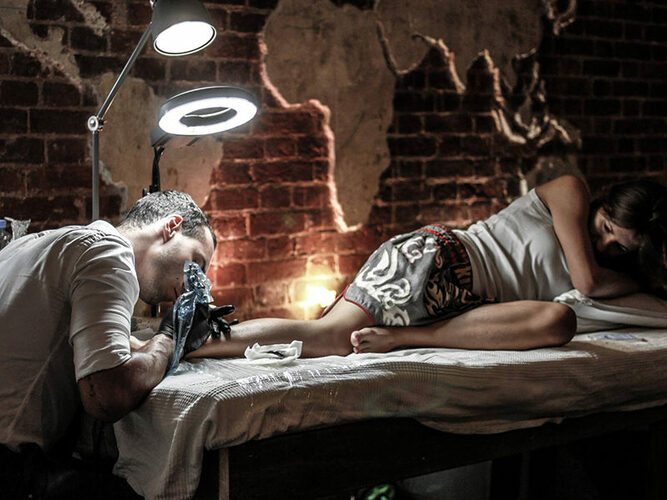

How does the process of tattooing take place
Tattoo-masters can skip the 1st point of the algorithm, that is why you should warn about low pain threshold in advance. Some specialists do not work with anesthetics at all, citing a change in skin structure or poor pigment absorption.
Any anesthesia prior to the tattooing process is optional and individualized. In contrast, treatment with an antiseptic to disinfect is a mandatory process without which a session should not begin, otherwise there is a risk of complications related to the ingress of bacteria or blood contamination.
Analgesics or anesthetics, which is preferable?
The main task of all painkillers is to relieve any discomfort. However, the effect of their use varies greatly, especially if we are talking about analgesics and anesthetics.
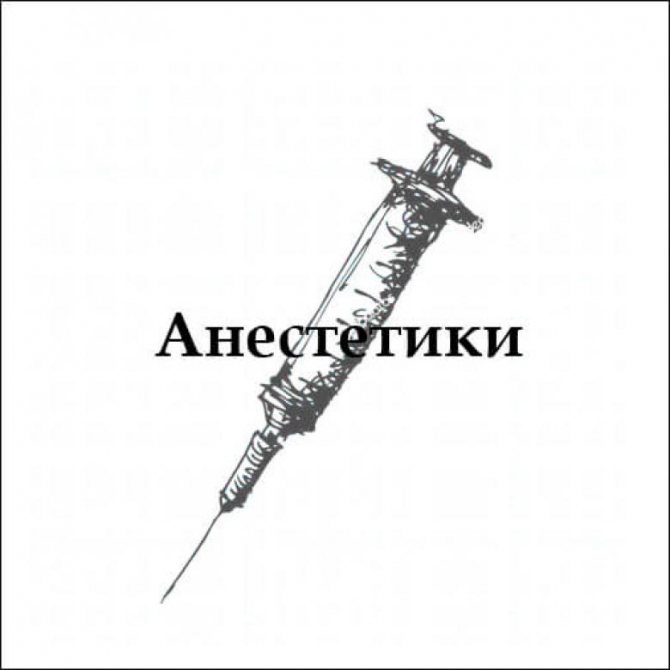

The task of the former is to relieve pain in the lesion, to relieve spasm. Drinking before a visit to the tattoo-salon Analgin or pentalgin tablets during a session will not give the desired effect. And some drugs (Ibuprofen) influence the blood values, which complicates the work and increases the period of healing of the traumatized skin area.
Anesthetics, in addition to their pain-relieving effect, take away sensitivity. They are administered intramuscularly, intravenously, by inhalation, or by surface application. They are not available in pill form!
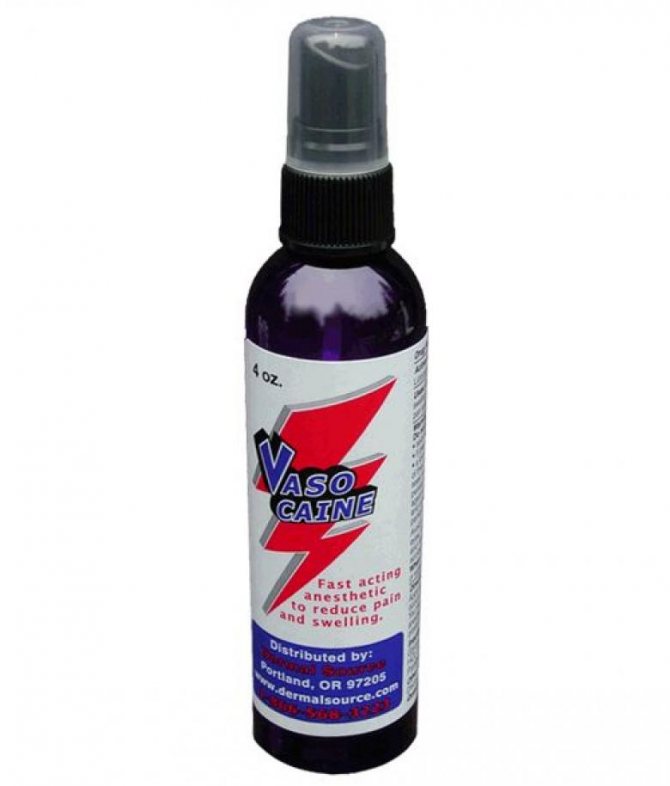

They are not injected before a tattoo is applied, as the skin is stretched, which eventually affects the quality of the drawing.
"Folk" analgesic - vodka, is categorically contraindicated. It dilates blood vessels, increases blood flow, increases perspiration and does NOT anesthetize. No self-respecting artist would work with such a client.
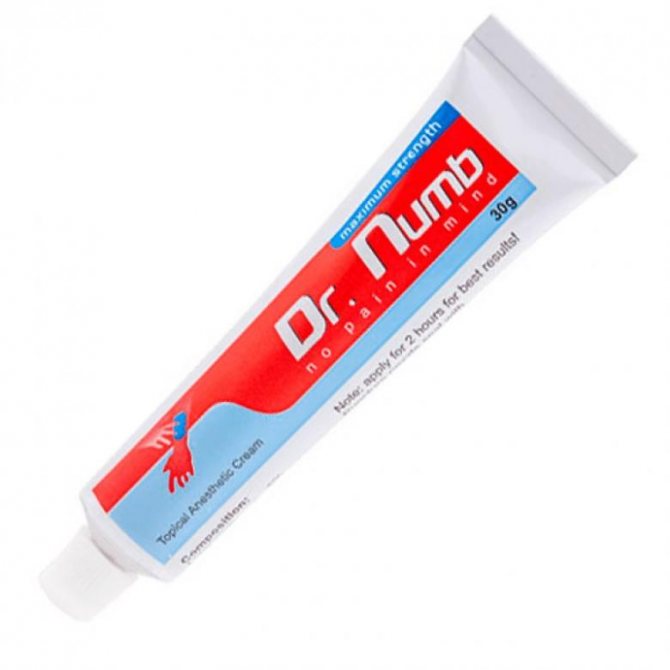

For tattooing it is advisable to use local (application, terminal) anesthesia. Its effect is manifested in a temporary loss of sensitivity of the skin on a particular area of the body. Means are available as a spray, cream, ointment or gel.
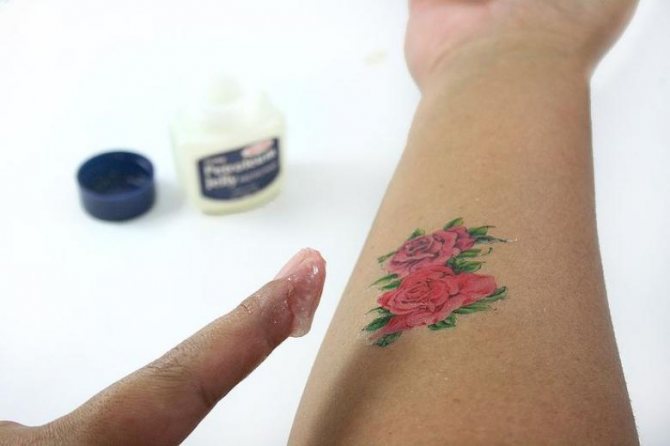

The composition of TKTX cream
The effectiveness and versatility of the cream is due to its composition. The main active ingredients in the ointment are prilocaine and lidocaine at a concentration of 5% and epinephrine at 0.01%. Infiltration anesthesia is most effective with a mixture of prilocaine and lidocaine. The two anesthetics are virtually identical in composition and guarantee a long-lasting analgesic effect even if a person has an insensitivity to one of the components.
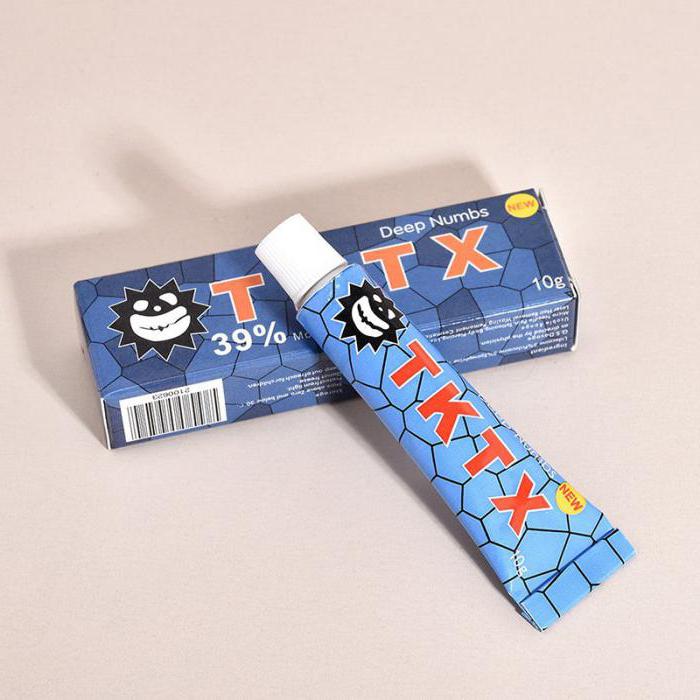

Epinephrine is an effective coagulant, the use of which reduces swelling and bleeding during the procedure. The TKTX ointment has an effective analgesic effect, thanks to its ideal combination of active substances, which distinguishes it from its analogues.
How much pain you will have to endure during a tattoo session
As we mentioned at the beginning, pain sensation is directly related to the amount of time the receptor cells send pain signals to the brain. It is in your best interest to keep the session as short as possible. However, the difficulty of the job, the skill of the craftsman, and other external factors also affect its duration.
There are generally accepted rules: a professional will not make you a tattoo more than three or four hours. If you can't do all the work in that time, he will schedule additional sessions.
Tattooing is most often more scary than painful. During the process of applying the sensations are sharp for the first 10-15 minutes, then the body gets used to it and for the next three hours is quiet enough to bear the "suffering". That is why a session usually does not last longer than four hours, though everything is individual.
Alexander Maryshev
Tattoo master, does tattoos for about 20 years
To reduce pain during the session, it is recommended to use painkillers (e.g., TKTX, Dr. Numb, Painless Tattoos Cream). They are good if you are getting a large size tattoo. Before buying, be sure to consult with the master - he will advise which product is suitable in your case.
It also helps to feel less pain by having the right attitude. During the session you need to calm down and breathe deeply. You can call a friend for support or listen to your favorite music, all of which will help you feel more at ease.
The best places for tattoos
Clavicle
If you're dreaming of getting a tattoo on your upper chest, it might be a good idea to opt for the outer part of your collarbone. This area tends to be the least exposed to the sun, as it's easy to cover up with shirts and scarves.
In addition, the skin on this area does not stretch much over the years, which is another factor that can affect how the tattoo will look in the future.
The inside of the arm
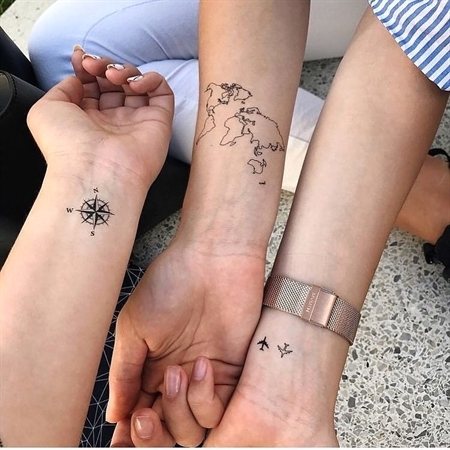

@tattooo9993.
If you're in the sun a lot, you should avoid getting a tattoo on the outside of your arm and instead choose a more protected spot.
Your inner forearm is virtually immune to the sun, and without the constant onslaught of UV rays (which destroy the ink), tattoos in this area tend to stay fresh for a long time.
Back
Again, due to the fact that it is often covered by clothing, the back is often a prime location for long-term tattoos. Also, the aging process of the skin doesn't really hurt the tattoo done in this location.
Neck
A tattoo right below the hairline on the neck will look newer longer because it is protected from sun exposure by the hair. And the longer it is, the "quieter" your tattoo feels.
Shoulders and calves
Because the skin on the shoulders and calves is not susceptible to aging, tattoos in these areas tend to "stay in place" forever.


